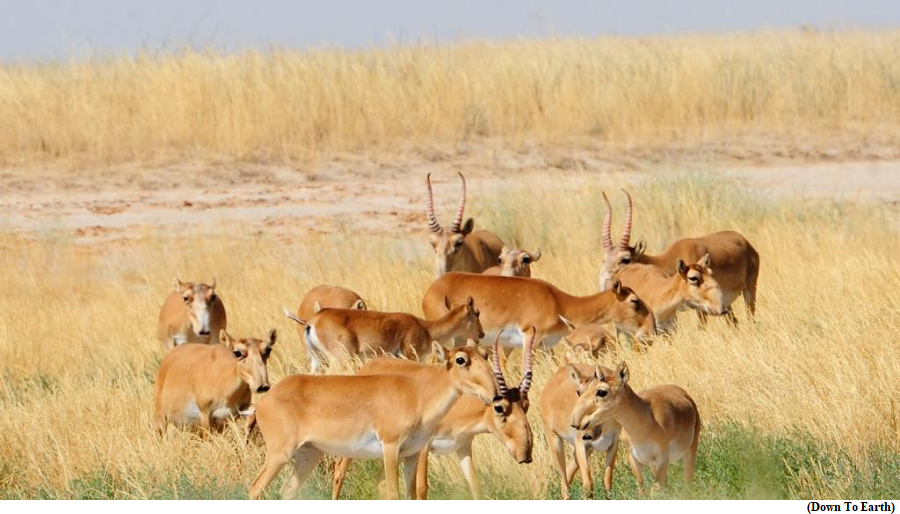SC holds arbitration deals in unstamped contracts to be valid (GS Paper 2, Judiciary)

Why in news?
- A seven-judge Constitution Bench recently held that arbitration agreements embedded in unstamped or insufficiently-stamped substantive commercial contracts or instruments are not invalid, unenforceable or even non-existent.
Why it matters?
- The Supreme Court judgment gives a significant shot in the arm for India’s ambition to become an international arbitration hub to quickly resolve commercial disputes.
- Earlier, arbitrations on such disputes had struck a roadblock owing to non-payment of the required stamp duty for or insufficient stamping of contracts by the parties.
- Arbitration aims to provide speedy, efficient, and binding resolution of disputes that have arisen between the parties in regard to their substantive obligations.
Highlights of the judgement:
- Delivering the lead opinion in a curative petition overruling an earlier five-judge Bench verdict of the Supreme Court in the N.N. Global case, Chief Justice of India D.Y. Chandrachud held that “non-stamping or inadequate stamping is a curable defect”.
- The Chief Justice clarified that arbitration agreements would not be non-existent, unenforceable, or invalid if the underlying contract was not stamped.
- The judge said non-payment or insufficient stamping of contracts under the Stamp Act would not affect arbitration proceedings under the Arbitration Act. Such contracts were only inadmissible in evidence under the Stamp Act.
Self-contained code:
- Arbitration Act is a self-contained code. Accordingly, matters governed by the Arbitration Act such as the arbitration agreement, appointment of arbitrators and competence of arbitral tribunal to rule on its jurisdiction have to be assessed in the manner specified under the law.
- Therefore, provisions of other statutes (Stamp Act) cannot interfere with the working of the Arbitration Act, unless specified otherwise.
- The court said an arbitration agreement is presumed to have separate existence from the contract.
The Saiga has beaten extinction for now, finds new IUCN Red List
(GS Paper 3, Environment)
Why in news?
- Recently, the species’ (Saiga tatarica) category was changed from Critically Endangered to Near Threatened by the International Union for Conservation of Nature (IUCN).
- The Saiga has a Medium Conservation Legacy; without past conservation action, the Saiga would likely have gone extinct in one spatial unit, and would have lost viability and functionality in others, resulting in a score of 19 per cent.

Background:
- The Saiga have roamed the earth since the last Ice Age.
- There were an estimated one million saigas in Russia and Central Asia in the early 1990s, but by 2003 their numbers had plummeted, with only six per cent of the population remaining.
Habitat:
- The Saiga has two sub-species: Saiga tatarica tatarica (found in most of the range) and Saiga tatarica mongolica (found only in Mongolia).
- The antelope were once found throughout the Eurasian Steppe, the great band of grassland that stretches from Hungary in Europe to Manchuria in Asia.
- Today, the animal is found in fragmented populations within Kazakhstan, Mongolia, the Russian Federation and Uzbekistan, according to the Saiga Conservation Alliance (SCA), a network of researchers and conservationists working to protect the Saiga.
Conservation Efforts:
- The IUCN update credited “effective national and international conservation efforts” for turning the tide in favour of the Saiga.
- This substantial positive change in global Red List status reflects the remarkable recovery of Saiga populations in Kazakhstan, which have recovered from a perilously low estimate of just 48,000 in 2005 to now over 1.9 million.
- The Government of Kazakhstan has demonstrated highly commendable leadership in species recovery, investing heavily in a suite of impactful actions including anti-poaching initiatives, robust law enforcement and border control measures, and establishment of a series of major new State Protected Areas.
- It added that the government’s collaboration with civil society had played a crucial role in fostering a collaborative network that incorporated government agencies, conservation practitioners, academics, and international experts.
Population in other countries:
- Current population numbers for Saiga in Russia are 38,000, up from 4,500 in 2016, while Uzbekistan hosts an estimated 500 Saiga, c.200 of which were first discovered in the Aral Sea Region in 2021 whilst the remaining 300 are isolated by human-made barriers to migration.
- The Mongolian subspecies numbers 15,540 individuals, according to a November 2023 census. There have been no instances of poaching since 2018, when the population level was 3,391 said.
Way Forward:
- The species will only be fully recovered if it regains its role in the ecosystem across its entire range, with ongoing poaching, illegal trade, disease, climate change, disturbance and infrastructure development all posing a threat to Saiga.
Road fatalities rise in India, despite global drop, WHO
Why in news?
- Recently, the World Health Organization (WHO) released a report titled, the ‘Global Status Report on Road Safety 2023’.

Details:
- Road traffic deaths fell by 5% to 1.19 million annually worldwide between 2010 and 2021, with 108 United Nations member countries reporting a drop.
- India, however, registered a 15% increase in fatalities.
- The total number of road traffic fatalities in India went up to 1.54 lakh in 2021 from 1.34 lakh in 2010.
Decline in road fatality:
- Ten countries succeeded in reducing road traffic deaths by over 50%. These are Belarus, Brunei Darussalam, Denmark, Japan, Lithuania, Norway, Russian Federation, Trinidad and Tobago, the United Arab Emirates, and Venezuela. Thirty-five countries made notable progress, reducing road traffic deaths by 30% to 50%.
- As of 2019, road crashes were the leading cause of deaths among children and youth aged five to 29 years, and were the 12th leading cause of deaths when all ages are considered. Two-thirds of deaths occurred among people of a working age.
- In the past decade, a 5% reduction in absolute numbers of road traffic fatalities was accompanied with a growth in the global population by nearly 14 billion, or roughly 13%.
- This translates into the road fatality rate declining from 18 per 1 lakh people in 2010 to 15 per 1 lakh in 2021, which represents a 16% decline in the road traffic death rate since 2010.
Vehicle growth:
- During the same period, the global motor vehicle fleet grew 160%. Therefore, annual fatality rates per 1 lakh vehicles fell from 79 deaths to 47 deaths, which is a 41% reduction.
Global road traffic deaths:
- The report shows that 28% of global road traffic deaths occurred in the WHO’s South-East Asia Region, 25% in the Western Pacific Region, 19% in the African Region, 12% in the Region of the Americas, 11% in the Eastern Mediterranean Region, and 5% in the European Region.
- Nine in 10 deaths occur in low- and middle-income countries, and fatalities in these countries are disproportionately higher when set against the number of vehicles and roads they have.
- The risk of death is three times higher in low-income than high-income countries, yet low-income countries have just 1% of the world’s motor vehicles.




